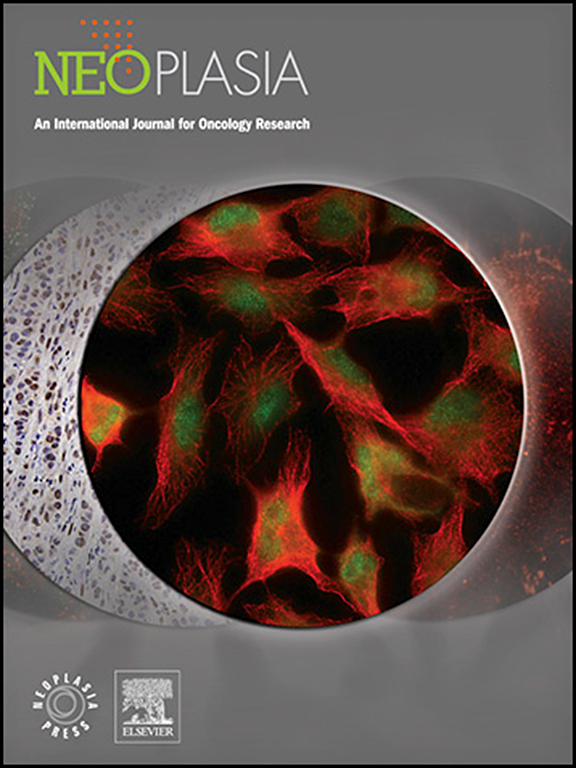The Impact of Atorvastatin on Intraprostatic Biomarkers – Prognostic Value of 3LS-score – Follow-up of ESTO1-Trial
IF 7.7
2区 医学
Q1 Biochemistry, Genetics and Molecular Biology
引用次数: 0
Abstract
Background
Prostate cancer (PCa) remains a global health burden, with limited reliable biomarkers beyond prostate-specific antigen (PSA). Statins have been associated with survival benefits in advanced Pca, potentially by modulating cholesterol metabolism and tumor biology. However, the causal mechanisms are not well understood. A distinct three-lipid signature (3LS) has previously been proposed as a prognostic biomarker for PCa.
Objective
This study investigates the effects of atorvastatin intervention on PCa tissue markers, long-term clinical outcomes, and the prognostic value of the 3LS derived from prostate tissue lipidome.
Methods
The ESTO1 trial randomized 158 statin-naïve PCa patients to receive high-dose atorvastatin (80 mg daily) or placebo before prostatectomy. Long term outcomes were assessed for 102 patients through medical records review. Prostate tissue samples were pathologically characterized, and lipidome quantified. Cox regression models were used to analyse clinical outcomes between the groups. The 3LS score was calculated by identifying the constituent lipids from the prostate lipidome.
Findings
Higher intraprostatic atorvastatin lactone concentrations were associated with reduced Ki67 expression and PSA levels. After a median follow-up of seven years, no significant differences were observed in biochemical recurrence, overall mortality, or initiation of hormonal therapy. However, the atorvastatin arm had a lower risk of major acute cardiovascular events (HR 0.11, 95% CI 0.01–1.01). The intraprostatic 3LS correlated with higher baseline tumor aggressiveness but did not predict subsequent outcomes.
Conclusion
Higher atorvastatin lactone concentrations in the prostate tissue were linked to improved pathological variables. Pre-surgery statin intervention reduced MACE risk but no impact on other clinical outcomes was observed. The 3LS from prostate tissue does not seem to be prognostic marker in localized Pca.
阿托伐他汀对前列腺内生物标志物的影响- 3ls评分的预后价值- esto1试验的随访
前列腺癌(PCa)仍然是一个全球性的健康负担,除了前列腺特异性抗原(PSA)之外,可靠的生物标志物有限。他汀类药物可能通过调节胆固醇代谢和肿瘤生物学,与晚期Pca患者的生存益处相关。然而,其因果机制尚不清楚。一个不同的三脂特征(3LS)已经被提出作为前列腺癌的预后生物标志物。目的探讨阿托伐他汀干预对前列腺癌组织标志物、长期临床结局的影响,以及前列腺组织脂质组3LS的预后价值。方法ESTO1试验随机选取158例statin-naïve前列腺癌患者,在前列腺切除术前接受大剂量阿托伐他汀(每日80 mg)或安慰剂治疗。通过病历回顾对102例患者的长期预后进行了评估。前列腺组织样本病理表征,脂质组定量。采用Cox回归模型对两组临床结果进行分析。3LS评分是通过识别前列腺脂质组的组成脂质来计算的。发现前列腺内阿托伐他汀内酯浓度升高与Ki67表达和PSA水平降低相关。中位随访7年后,在生化复发率、总死亡率或激素治疗开始方面没有观察到显著差异。然而,阿托伐他汀组发生主要急性心血管事件的风险较低(HR 0.11, 95% CI 0.01-1.01)。前列腺内3LS与较高的基线肿瘤侵袭性相关,但不能预测后续结果。结论前列腺组织中阿托伐他汀内酯浓度升高与病理指标改善有关。术前他汀类药物干预降低了MACE风险,但没有观察到其他临床结果的影响。前列腺组织的3LS似乎不是局部前列腺癌的预后标志物。
本文章由计算机程序翻译,如有差异,请以英文原文为准。
求助全文
约1分钟内获得全文
求助全文
来源期刊

Neoplasia
医学-肿瘤学
CiteScore
9.20
自引率
2.10%
发文量
82
审稿时长
26 days
期刊介绍:
Neoplasia publishes the results of novel investigations in all areas of oncology research. The title Neoplasia was chosen to convey the journal’s breadth, which encompasses the traditional disciplines of cancer research as well as emerging fields and interdisciplinary investigations. Neoplasia is interested in studies describing new molecular and genetic findings relating to the neoplastic phenotype and in laboratory and clinical studies demonstrating creative applications of advances in the basic sciences to risk assessment, prognostic indications, detection, diagnosis, and treatment. In addition to regular Research Reports, Neoplasia also publishes Reviews and Meeting Reports. Neoplasia is committed to ensuring a thorough, fair, and rapid review and publication schedule to further its mission of serving both the scientific and clinical communities by disseminating important data and ideas in cancer research.
 求助内容:
求助内容: 应助结果提醒方式:
应助结果提醒方式:


